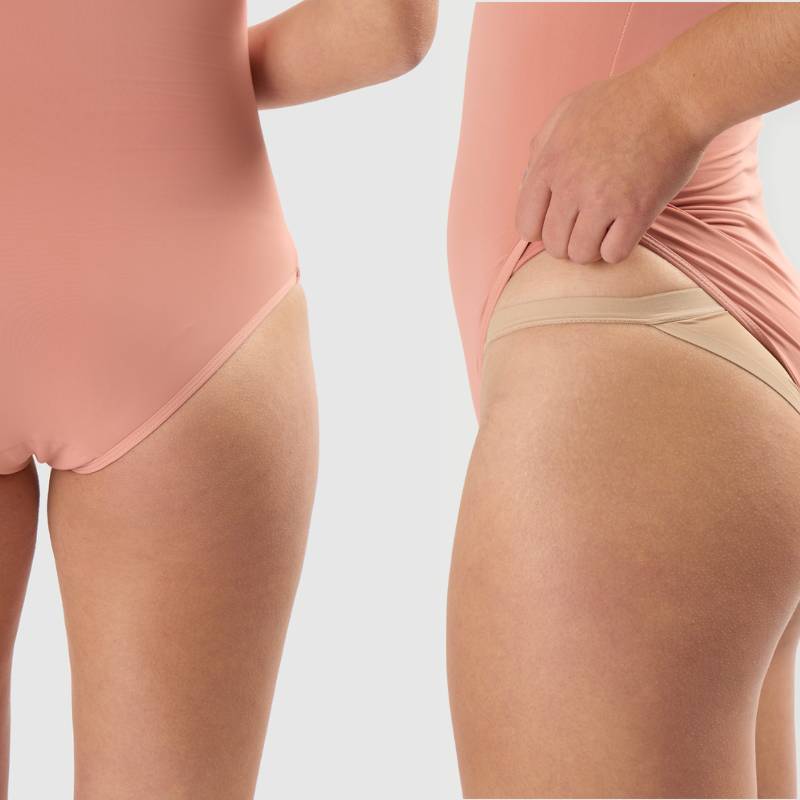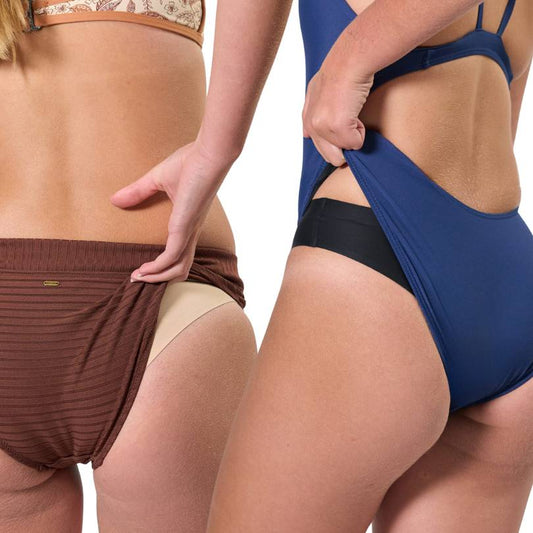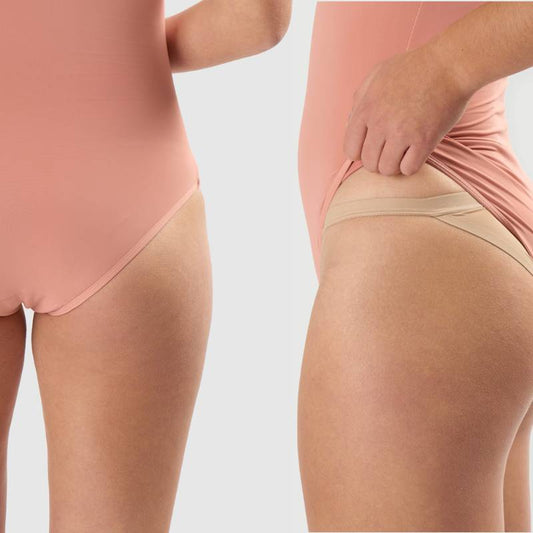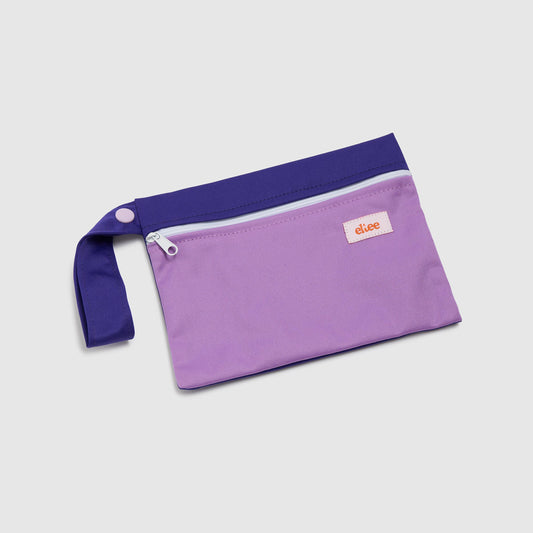It’s Halloween today, which means everyone’s playing with blood - splattering it on costumes, painting it on faces, dripping it from plastic knives. I’m here to defend the real kind: menstrual blood.
Let’s talk about why period blood isn’t the stuff of nightmares, and why the only scary thing about it is how much stigma we’ve splashed onto it over the centuries.
Menstrual Blood: Gross or Super Interesting-and-Kind-of-Amazing-Even-Though-Annoying?
First things first: what is menstrual blood? Despite what society, traditions, and bad jokes might have you believe, period blood isn’t dirty or impure, and it doesn’t make you unclean.
Your body isn’t “flushing out” anything nasty.
In fact, menstrual fluid is made up of the same blood that runs through your veins, plus some uterine tissue, a bit of mucus, and helpful, healthy vaginal flora – and that. is. it.

It’s literally normal blood and tissue your body doesn’t need because pregnancy didn’t happen that month. There’s nothing magically gross about it; it’s just doing what it’s meant to do. It’s certainly not akin to faeces or urine (those carry waste products; menstrual blood does not).
In her piece “Periods Aren’t Dirty. They’re Data” on The Blood, Dr Amy Whitbread notes that:
“calling it ‘menstrual hygiene’ reinforces a message that periods are a mess to manage, not a vital, natural biological process.”
In short, menstrual blood is natural and clean – just part of a healthy cycle.
So why the ick factor?
Answer: Centuries of stigma.
People have been taught to fear and shame periods for a long time - and those outdated attitudes still haunt us. You thought ghosts were scary? Please. Try stigma. If you really want to terrify someone this Halloween, dress as one of those suckers. 🎃😱
A Brief Bloody History of Menstrual Stigma
Let’s hop on our broomsticks and fly back in time.
The stigma around menstruation has some ancient roots. The Bible itself labelled menstruating women as “unclean.” In Leviticus 15:19–33, it says a woman on her period is unclean for seven days, and anything—or anyone—she touches is unclean too. Basically, biblical law quarantined women like they were cursed. (And if you think that’s extreme, buckle up.)
Enter Pliny the Elder – aka the founding father of menstrual paranoia, or the OG Andrew Tate in a toga. This 1st-century Roman writer claimed that contact with menstrual blood caused truly absurd “monstrous effects.” Crops would wither. Wine would sour. Mirrors would crack. Bees would abandon their hives. Dogs would go mad. Iron would rust just by looking at you sideways. (Okay, not that last bit—but almost.)

It reads like a horror movie pitch, but people actually believed this stuff for centuries. Pliny walked so generations of period shame could run.
Medieval myths only amplified the fear. In the Middle Ages, some believed that if a man’s penis touched menstrual blood, it would literally burst into flames, and a child conceived during menstruation might be born possessed by the devil, deformed... or (gasp) a redhead. Talk about horror lore! 🔥👹 (I’m not sure what they had against redheads. I mean, Ron Weasley, Ed Sheeran, Isla Fisher, Jessica Chastain… angels, every one of ‘em.)
Even as late as the 17th century, one medical text compared menstruating women to a cockatrice (a mythical beast whose breath could poison and kill), suggesting women’s periods could spoil anything they came near.
In short, period stigma is one monster that has refused to die.
Why All This Insanity?
Simple: patriarchy and ignorance.
Most of these claims were made by male authorities who understood little about female biology, so they invented superstitions. Labelling women as “impure” or “dangerous” during menstruation was a convenient way to control and demean them.

By painting period blood as scary or evil, society kept women feeling ashamed of a completely normal bodily function.
Classic villain move, right?
Fast Forward: Modern Stigma Is Alive (or Undead) and Well
You might think, “Surely we’re past all that crazy stuff now?” Well, we’re not accusing anyone of killing crops with period blood anymore (progress!), but period stigma is still very real. It just wears a different mask.
Instead of calling periods evil, today’s society quietly suggests they’re something to hide, hush up, or be embarrassed about.

Think about it: ever done the “tampon up the sleeve” trick? You’re not alone – about 73% of women and girls hide their pads or tampons on the way to the bathroom. We’ve been taught that no one should see a sanitary product; it’s like a secret mission to avoid The Exposure of The Pad!
Even ads sold this idea. In 1950, Good Housekeeping ran an ad for Modess sanitary napkins boasting that the box was “skillfully shaped not to look like a napkin box, so the sharpest eyes couldn’t guess what’s inside.” In other words: hide those pads, ladies!
And let’s not forget the blue liquid. For decades, ads pretended menstrual blood was blue Kool-Aid rather than red. It basically screamed, “Periods are too gross to show, so let’s use Windex instead.” 🙄
I’ll admit, I once used blue in a demo video and got (rightly) called out. In my defence, I usually use real cow’s blood from my friendly local butcher, but inspiration struck and all I had was blue food colouring. Anyhoo...
Only recently have brands started ditching that trope. Eltee, of course, keeps it real. Kotex too – they launched a campaign using red liquid to represent period blood. Seeing red was oddly revolutionary, WHICH IS ACTUALLY RIDONCULOUS!
Periods aren’t blue, folks. We are not Smurfs.
Language, Shame and Silence
We’ve developed a whole vampire library of euphemisms: “that time of the month,” “Aunt Flo,” “on the rag,” “the curse,” “shark week.” Some are funny (I do enjoy “riding the cotton pony” 🐴), but why do we use them? Because saying “I have my period” is seen as taboo.
An analysis found over 5,000 euphemisms for “period” used around the world – an impressive display of creativity, but also proof of how much we tiptoe around it. Euphemisms obscure real conversation, reinforcing the idea that it’s something to hide.
And that secrecy has consequences.

Silence and shame around menstruation hurts women and girl's health. If you’re taught to grin and bear it, you might think crippling pain is normal or feel too embarrassed to ask for help. One UK survey found that 79% of girls and young women experienced period symptoms that worried them but never saw a doctor.
Similarly, Endometriosis UK found 62% of women (16–54) would delay going to a doctor for possible endometriosis symptoms – often because they felt embarrassed or feared not being taken seriously. The average diagnosis time? Eight years.
Stigma is literally prolonging suffering. Researchers note that treating periods as unspeakable stops women and girls from learning what’s normal, and prevents them from seeking help. That’s scarier than any ghost or ghoul. 👻
And the fallout doesn’t stop there. Period stigma chips away at self-esteem. If you grow up hearing periods are gross, you start to feel like you are gross. No wonder so many girls want to disappear for a week each month.
It shows up in sport too. Our 2024 survey found that 63.4% of Australian girls aged 11–16 skip training or quit sport altogether because of period-related issues they think are too hard to manage. That’s not weakness; that’s stigma doing its worst.
How do we drive a stake through the heart of this old menstrual stigma? 🧛♀️
Alright, enough doom and gloom, let’s talk solutions. Real change starts with normalisation and education.
And the good news is that we can all help with that, starting right now.
Start with normalisation and education. Talk openly. Say “period.” If someone needs a pad, don’t whisper. If cramps are wrecking your day, say so. The more we talk, the faster the taboo dies.
Call out the nonsense too. If brands, movies, or media still act like menstruation is shameful, say something. Support companies that “go red” and keep it real.
Educate everyone – not just girls. Boys, parents, coaches, teachers. The facts kill fear faster than anything.
And fight practical barriers. Push for free or affordable products, clean bathrooms, proper disposal, and realistic policies. Stigma thrives on silence and inconvenience.
Finally, lead with empathy and pride. Menstruation means your body’s working as it should. Without it, none of us would be here.
By taking these steps, we chip away at the “period = shame” myth. Bit by bit, we drive that wooden stake through the heart of the stigma vampire. 🩸
I want to end with a little public service announcement.
If the blood you’re freaking out about is dripping from the jaw of a man-eating zombie or a off the chainsaw of a serial killer – by all means, scream. Run! 🧟🩸 That’s indeed scary blood.
But the blood that flows from your uterus each month? Nothing to fear. It means your body’s working. It’s not a curse, not a shameful secret standing between you and death by embarrassment, it’s just a part of life.
Let’s retire the trope that periods are scary. The only spooky thing about them is how society has made them seem mysterious for so long.
So remember:
Ghosts = scary.
Horror-movie blood = scary.
Menstrual blood = literally the opposite of a horror show.
Because life’s scary enough without turning biology into a horror story.
References:
- Whitbread, A. (2024). Periods Aren’t Dirty. They’re Data: Why We Need to Rethink Menstrual Hygiene. The Blood.
Available at: https://www.theblood.io/blog/periods-arent-dirty-theyre-data-why-we-need-to-rethink-menstrual-hygiene -
Eltee Sydney. (2024). Why Girls Quit Sport: Understanding the Dropout Around Menstruation.
Available at: https://elteesydney.com.au/blogs/period-info-guides/why-girls-quit-sport -
GPnotebook. (n.d.). Menstruation – Gynaecology.
Available at: https://gpnotebook.com/en-GB/pages/gynaecology/menstruation - Rees, A. (2025, April 21). This Overlooked Bodily Waste Product Is Proving Useful for Medical Research. ScienceAlert.
Available at: https://www.sciencealert.com/this-overlooked-bodily-waste-product-is-proving-useful-for-medical-research -
Calendar-Canada FAQ. (n.d.). What Is the Difference Between Period Blood and Regular Blood?
Available at: https://www.calendar-canada.ca/frequently-asked-questions/what-is-the-difference-between-period-blood-and-real-blood -
IQYIC. (2025, September 26). Where Does Menstrual Blood Come From? Source, Composition & Biological Process Explained.
Available at: https://iqyic.com/archives/where-does-menstrual-blood-come-from-source-composition-biological-process-explained/92571 -
ScienceDirect. (2024). The Composition of Menstrual Blood, Its Applications, and Recent Developments.
Available at: https://www.sciencedirect.com/science/article/pii/S266657192400032X -
ABC News. (2025, October 4). One in Five Girls Consider Dropping Athletics and Swimming Due to Periods.
Available at: https://www.abc.net.au/news/2025-10-04/one-in-five-girls-consider-dropping-athletics-swimming-period/105803342 -
Flinders University News. (2025, February 13). Alarming Gap on Girls’ Sport.
Available at: https://news.flinders.edu.au/blog/2025/02/13/alarming-gap-on-girls-sport/ - Endometriosis UK. (2021). Public Perceptions and Delay in Diagnosis.
Available at: https://www.endometriosis-uk.org -
Good Housekeeping. (1950). Modess Advertisement: “Skillfully Shaped Not to Look Like a Napkin Box.”
Archival reference: Period Product Advertising History, 1950s press ads.













